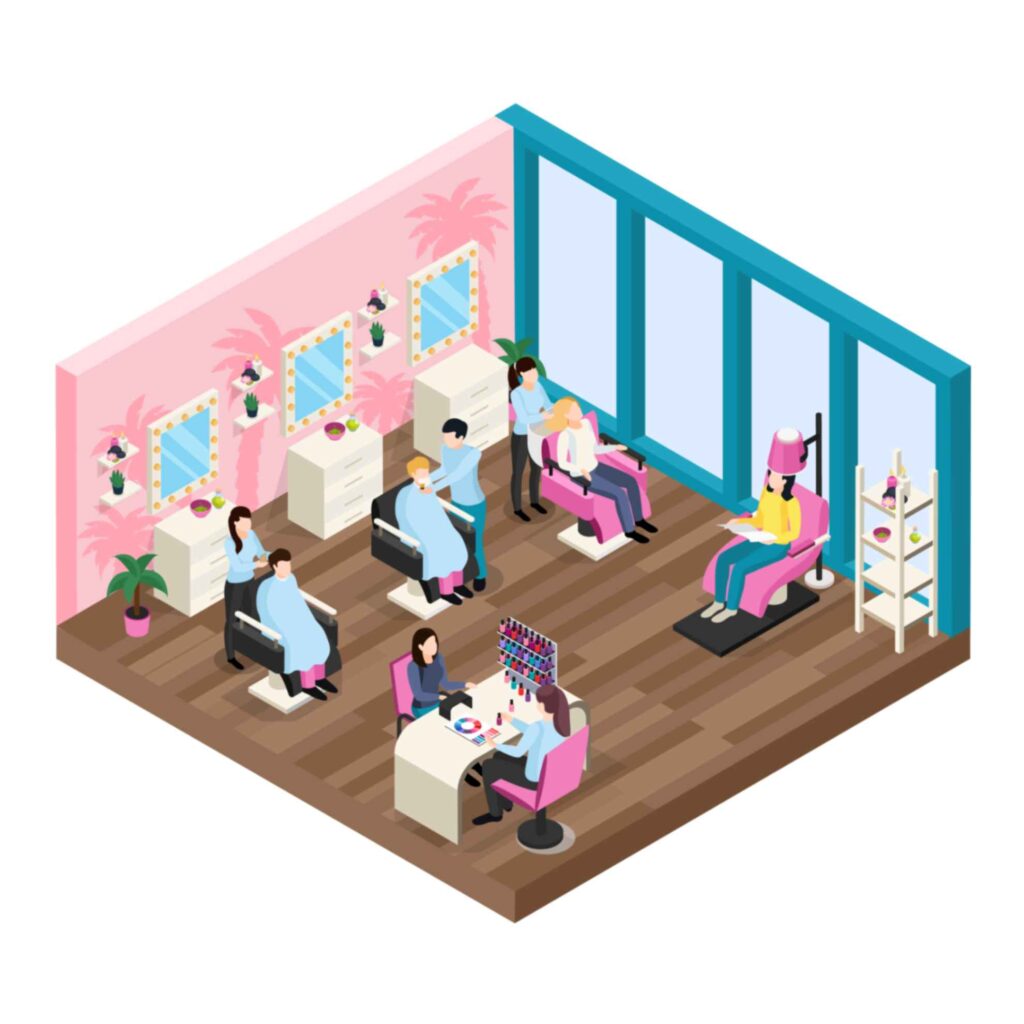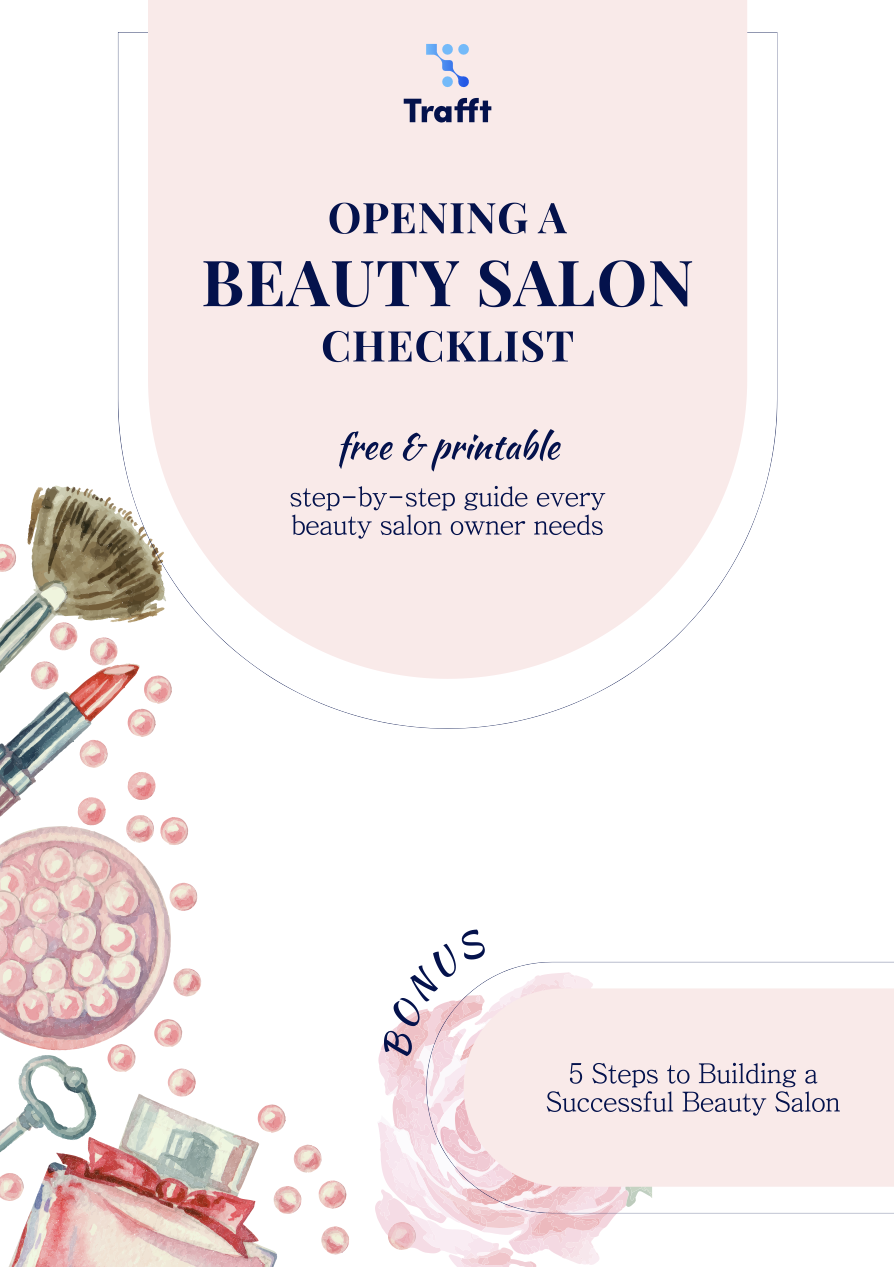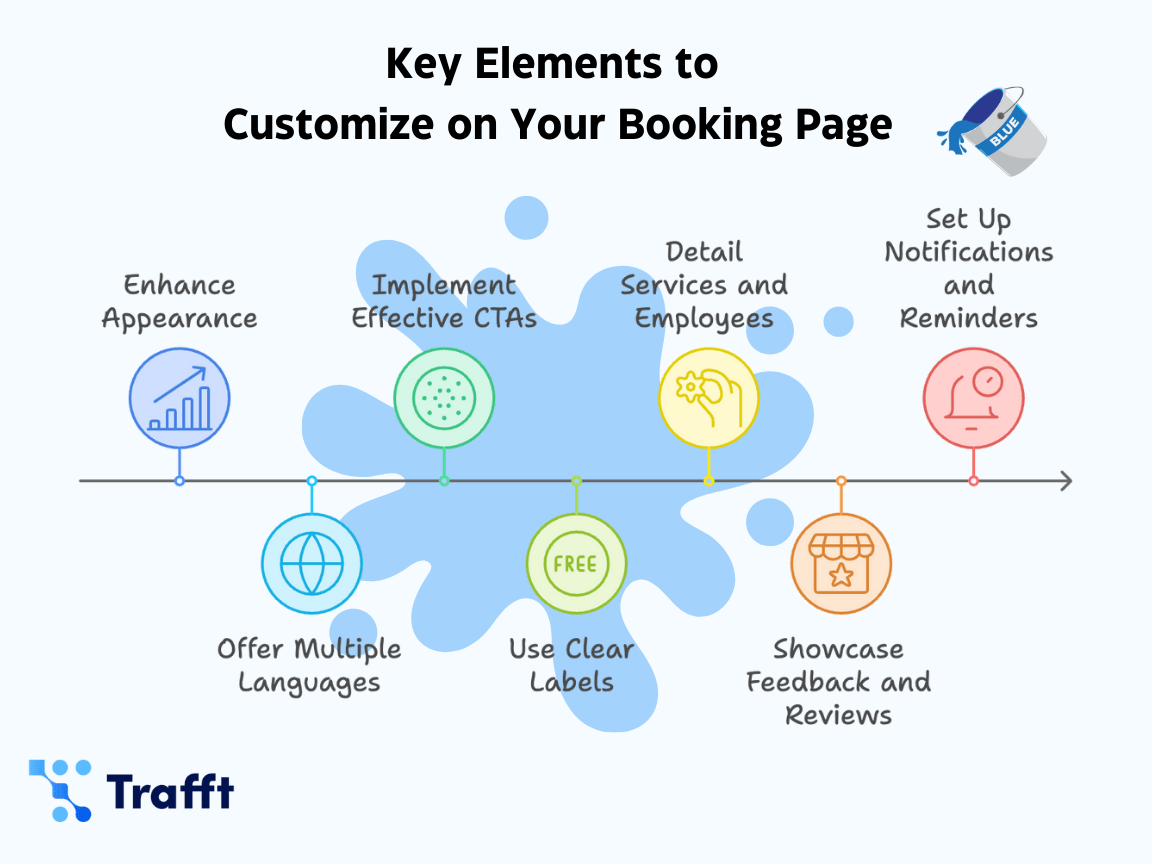The beauty industry is ever-evolving, especially with the help of social media where it seems there is every day a new trend, product, or beauty gadget. So, opening a salon will allow you to express your creativity and passion into a profitable career!
But, opening a salon is not just about passion and creativity - it also involves planning and financial investment. Don’t worry, we will guide you through various costs associated with opening a salon, from the initial setup and legal fees to ongoing operational expenses.
Sit back and relax, and let’s dive into the costs of opening a salon!
Thank you for subscribing. Check your mail for details
Key Initial Considerations of Opening a Salon
Before diving into details about opening a salon and its costs, you first need to take into account a few key factors that will greatly impact your initial investment and ongoing operational costs.
Type of salon
Firstly, think of the type of salon you want to open - this will significantly influence your startup costs and potential clientele. A basic hair salon or a nail salon might require less equipment than a full-service spa, which offers a wider range of services including massages, facials, and body treatments. Each type of salon will have different space and equipment requirements and has its unique market and investment needs.
Also, think if you’d start a salon from scratch and build your own business, or you would buy an existing salon, and make it your own (which is a faster way to get into business quickly).
If you plan on opening a brand new salon, your expenses might go between $100,000 and $500,000. Buying an existing salon and adapting it will be more budget-friendly, and will total out at $32,000 on average. With an existing salon, you will likely get equipment, supplies, and staff, so giving it a personal touch will require less money.
Location considerations
Whether you’re buying an existing one, or building a new salon, the location will play a big role in its success and operational costs.
A salon in a high-traffic urban area or upscale shopping center will attract more walk-in clients but will have higher rent and competitive pressure. On the other hand, a suburban area will have lower rent but could require more marketing efforts to attract customers. Think about your target market and where your type of service will have a high demand. Also, don’t underestimate the accessibility, visibility, and the surrounding business - this can also influence your choice of location.
Size and scale
The size of your new salon will not only influence the initial costs but will affect how many clients you can service at one time. The more chairs and stations you have, the higher your potential income, but also the higher upfront and maintenance costs.
Decide how many styling chairs, spa rooms, or manicure stations you plan to have based on your target market’s size and expected foot traffic. Also, think if you’d like to operate a luxury salon with high-end services and decor, or a budget-friendly establishment that focuses on efficiency and value.
Each choice has different implications for space, design, staffing, and pricing strategies.
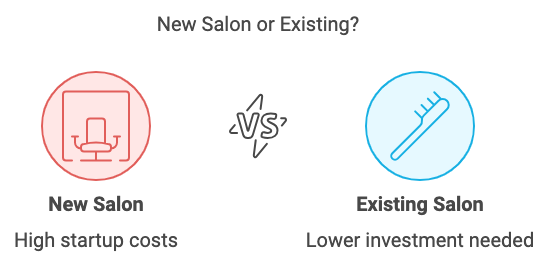
Licenses and Permits
Budgeting and understanding legal fees, licenses, and permits is one of the crucial steps of opening a salon. Here’s a breakdown of the key costs you’ll encounter:
Business license: You’ll need a general business license to open a salon, which can cost between $50 and $400 depending on your location.
Cosmetology license: A cosmetology license is required for each employee providing beauty services. A cosmetology school's costs range from $3,000 and $20,000 depending on the program’s prestige and scope.
Insurances:
- Liability insurance
- Property insurance
- Worker’s compensation
Insurance costs can start around $50 and go up to $10,000 a month, depending on factors like the number of employees, the state, and the services offered.
Health and safety compliance: Expect to budget around $100 to $300 for health and safety inspections. These routine checks will ensure your salon meets local health codes.
Legal consultations: To navigate all these requirements and licenses, you might want to hire a legal consultant. Hourly rates for legal advice can range from $100 to $300.
Before diving into details, check with your local Chamber of Commerce or Small Business Administration for specific requirements in your area, because costs can significantly vary.
New Equipment and Salon Supplies
New equipment and supplies are one of the main costs to open a salon. Some things you can buy second-hand and save some money, but there are items that should be purchased new to ensure quality and warranty coverage.
Salon equipment costs
- Salon chairs: Essential for any type of salon, prices range from $200 to $2,000 per chair depending on features and quality. Try finding second-hand chairs to save some money, but ensure they’re in good condition.
- Shampoo stations: Costs can vary from $265 to $850, with options for additional features like massage functions which can enhance clients’ experience.
- Salon styling tools: Prices for shears can range from $150 for basic models up to $1,125 for specialized shears. Combs, brushes, and razors also vary, generally costing between $40 and $160 for a set.
- Electric tools: Blow dryers and flat irons are essential, with blow dryers ranging from $80 to $400 and flat irons between $40 and $350.
Initial inventory of products
- Hair care products: Shampoos, conditioners, and styling products typically cost between $80 and $300 depending on the brand and quantity.
- Nail supplies: If you plan to offer nail services, initial costs for gels, polishes, removers, and other equipment can vary.
- Skincare products: Initial stock for facials and other skin treatments also varies based on brand and product type.
Additional supplies
- Salon towels and aprons: These supplies are more affordable, with towels costing between $10 and $25 each, and stylist aprons ranging from $12 to $30.
- Other items: Mirrors, spray bottles, and disinfectants are generally inexpensive, but are needed for day-to-day operations.
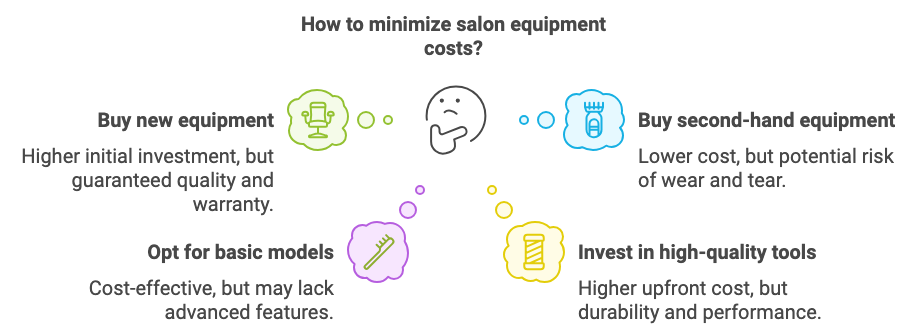
Ongoing Salon Costs
Running a salon is not just setting it up, but also managing the ongoing operational costs that come with daily operations. Here’s your main salon expenses:
Monthly rent or mortgage payments: This will probably be your biggest recurring expense. The cost will depend on your location, size, and the type of property you’re renting or have bought.
Utility costs: Water, electricity, and internet services are essential for various salon services, while a reliable internet connection is needed for booking systems and POS transactions. Costs vary based on usage and local rates.
Supplies: Hair care products, towels, and disinfectants need replenishment, and these costs will depend on the volume of clients, the type of services offered, and how efficiently you manage inventory. Wholesale purchases and good relations with supplies can help reduce costs.
Employee payroll: These are not just the hourly wages or salaries, but also any benefits you offer, such as health insurance, paid time off, and bonuses. Expenses will depend on the number of employees, their level of expertise, and the labor laws in your area. Check out salaries for beauty salon employees.
A Reliable Salon Booking System

To have a smooth operation and satisfied clients, it’s smart to incorporate a reliable salon booking system.
Beauty salons often experience problems with double bookings, no-shows, and miscommunication among the staff members. Trafft can help you overcome these problems, and help your business operations in many ways more!
- With automated SMS, email, and WhatsApp notifications, your clients will be reminded about upcoming appointments, and never miss them again!
- An automatically generated booking page will simplify the booking process, your clients will book an appointment with just a few clicks. The best part is you’ll be available for bookings any time of the day or night!
- From an admin page, you can easily access and manage every employee, see their appointments, and set up days off, or any other special days.
- Your clients can pay upfront through secure online payment systems (PayPal, Stripe, Mollie, or Authorize.Net).
- Rescheduling and canceling appointments will be very easy and simple for your clients.
- If you have more than one salon, managing different locations in different time zones will be a breeze.
You might wonder how much it costs to have such a well-rounded booking system. Well, it’s totally FREE for up to five users!
Check out Trafft’s other features and learn how to step up with managing your business!
So, What’s Your Budget for Opening a Salon?
How much it costs to open a salon depends on many factors. The average cost to open a new salon can range from $100,000 to $500,000 depending on the location, the scale of the business, and ongoing expenses such as rent and utilities.
To effectively manage all finances, it’s important to develop a detailed salon business plan and maybe even consult with financial and legal advisors to help you navigate licensing requirements and explore financing options.
Opening a salon isn’t just a cut-and-dry process, it’s about crafting a style that’s uniquely yours and making sure your finances don’t split at the ends!
Don’t forget to read:
- How to Open a Salon: A Step-By-Step Guide
- How to Be a Professional Hairstylist: From Passion to Profession
- How Much Do Salon Owners Make in 2024? + Tips to Earn More
- Creating a Winning Hair Salon Marketing Strategy

